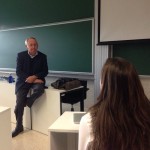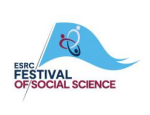As the spectre of “Impact” looms before us in REF 2014, I’d like to share a case study on developing interest in research in academic and practitioner communities. I don’t claim that it’s best practice but there may be some ideas for others to consider.
Two of my related areas of research in the public relations field are measurement and evaluation of campaign effectiveness and the history of public relations. Over the past two years I have brought them together in historical research into the evolution of public relations measurement and evaluation. This has already resulted in conference papers and a publication in the leading impact factored journal, Public Relations Review.
My most recent research has been into a controversial measure called Advertising Value Equivalence (AVE). It is widely used but has been effectively banned by leading public relations professional bodies. Next month, I will be presenting a paper on the history of AVE at the International Public Relations Research Conference in theUS. That paper will later be revised and submitted for a leading journal.
Knowing there is a world-wide interest the debate over AVE, I prepared a short “popular” version of the paper and targeted it at the Research Conversations blog of the US-based Institute for Public Relations, which is well-regarded and widely read.
It appeared on February 15 as ‘So, Where Did AVEs Come From, Anyway?‘ and immediately started an online discussion.
Taking the article’s URL, I then placed it with introductory text on three relevant LinkedIn groups for PR history, media measurement and theUK’s lead professional body. Online discussions have taken place on two of these groups. The URL was also sent out via my two Twitter accounts (@historyofpr and twatson1709). Each has resulted in retweets of the URL, including some by leading social media commentators. There have also been positive comments.
Within just two days, the use of social media has enabled the summarised research to reach potentially interested, relevant audiences around the world. And I have still to present the paper next month. Only time will tell whether “Impact” has been created but social media has help pave the way for knowledge transfer and industry engagement.
Any feedback on how I could have organised the social media dissemination more efficiently would be welcomed.
Prof Tom Watson, The Media School
 Bull run – archive research and lectures in Pamplona
Bull run – archive research and lectures in Pamplona










 ESRC Festival of Social Science 2025 – Reflecting back and looking ahead to 2026
ESRC Festival of Social Science 2025 – Reflecting back and looking ahead to 2026 3C Event: Research Culture, Community & Cookies – Tuesday 13 January 10-11am
3C Event: Research Culture, Community & Cookies – Tuesday 13 January 10-11am Dr. Chloe Casey on Sky News
Dr. Chloe Casey on Sky News Final Bournemouth University publication of 2025
Final Bournemouth University publication of 2025 On Christmas Day in the Morning…
On Christmas Day in the Morning… ECR Funding Open Call: Research Culture & Community Grant – Application Deadline Friday 12 December
ECR Funding Open Call: Research Culture & Community Grant – Application Deadline Friday 12 December MSCA Postdoctoral Fellowships 2025 Call
MSCA Postdoctoral Fellowships 2025 Call ERC Advanced Grant 2025 Webinar
ERC Advanced Grant 2025 Webinar Horizon Europe Work Programme 2025 Published
Horizon Europe Work Programme 2025 Published Update on UKRO services
Update on UKRO services European research project exploring use of ‘virtual twins’ to better manage metabolic associated fatty liver disease
European research project exploring use of ‘virtual twins’ to better manage metabolic associated fatty liver disease